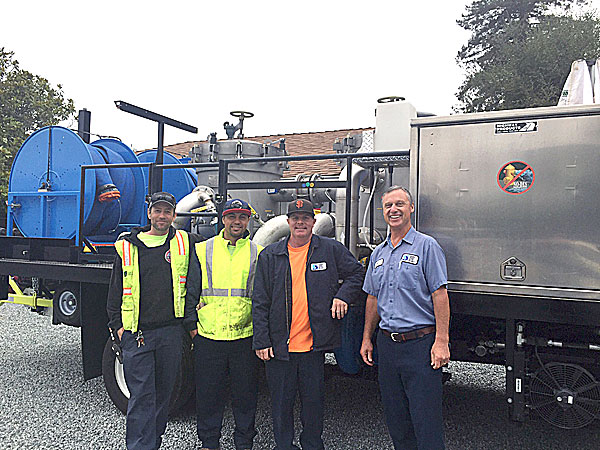
This May, Soquel Creek Water District re-initiated its Flushing Program, which was suspended due to the water shortage condition in the Mid-County region, and began using a new machine called the NO-DES, which eliminates water waste during the flushing program.
In this month’s column, we’ve asked Christine Mead, our Operations and Maintenance Manager, to share and explain this new innovative technology that will keep our pipes clean and save water:
Q: How does the NO-DES Unit work?
Q: How much did the NO-DES Unit Cost – How did the District pay for it?
The cost of the NO-DES unit and truck was approximately $380,000. The majority of the purchase was funded by the District’s Water Demand Offset Program, a conservation program that requires new development to offset their projected water demand by 200% through funding conservation projects in the District.
Q: How much water is saved?
It takes approximately 6 million gallons to flush the District’s distribution system using the traditional method. In addition to saving the 6 million gallons, the NO-DES unit can be used in areas with poor drainage that can’t be flushed properly with the traditional method.
Q: Who else is using Waste-Free flushing to clean their water mains?
San Jose Water Company, and the Cities of Hillsborough, Pasadena, and Fresno are a few of the water agencies in California that I know of who have purchased a NO-DES system.
Q: Where is the District currently conducting its Flushing Program?
The District is focusing on flushing the western portion of the distribution system first. Flushing water mains is a necessary step to prepare for receiving water from the City of Santa Cruz as part of the pilot water transfer project. This portion of the District will receive the greatest percentage of Santa Cruz water. It is important to clean the mains to minimize the potential for release of metals and other solids when receiving the water from Santa Cruz.
Q: What will customers experience when water mains are being flushed?
District customers may temporarily experience discolored water. Don’t be alarmed if water looks rusty. If District customers see some cloudiness or rust color in their water, we recommend flushing the pipes of the home by opening the front outside water spigot until the water runs clear. It is also advised that the water is clear before doing laundry, or running hot water.
•••
As always, if you have any questions about this month’s topic or anything else related to Soquel Creek Water District, feel free to contact Melanie Schumacher at melanies@soquelcreekwater.org or 831-475-8501×153 and visit www.soquelcreekwater.org for more information.